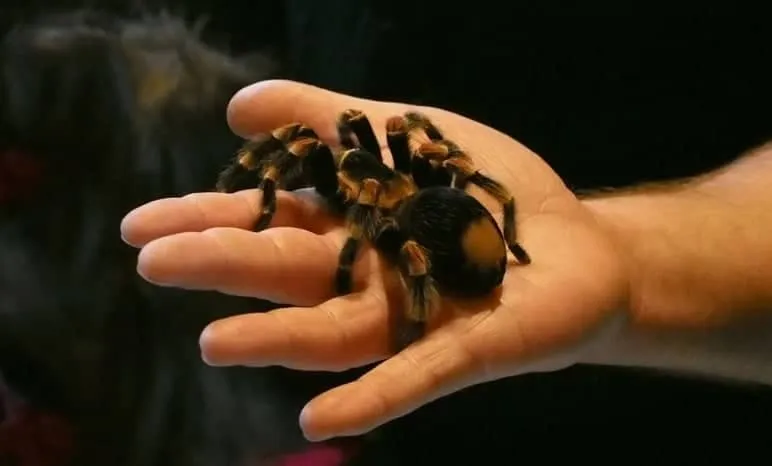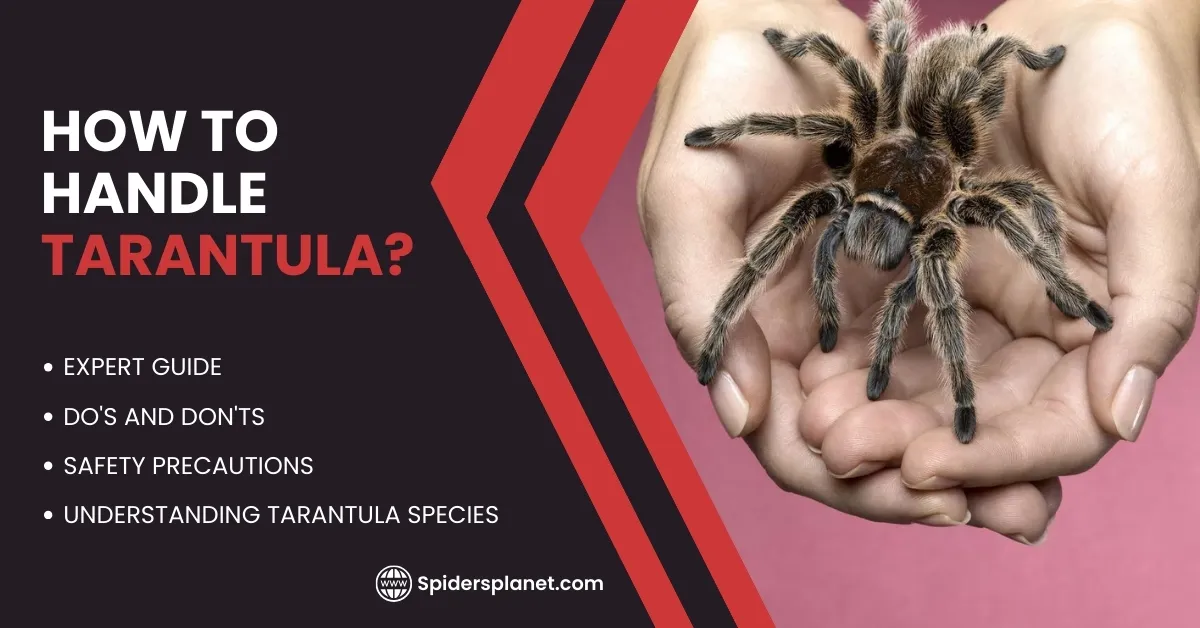Understanding Tarantulas & Handling
Handling a tarantula can be a rewarding experience, allowing you to observe and interact with your pet. However, it’s crucial to approach this with respect, caution, and a solid understanding of tarantula behavior and safety protocols. Tarantulas, though fascinating creatures, are delicate and can be easily stressed or injured. Proper handling minimizes risk to both the spider and the handler, ensuring a positive experience for all. This guide will provide you with the knowledge and steps needed to handle your tarantula safely and confidently, fostering a healthy relationship with your eight-legged friend.
Tarantula Behavior
Understanding a tarantula’s behavior is the cornerstone of safe handling. Tarantulas are generally not aggressive but will defend themselves when they feel threatened. Recognizing signs of stress is critical to avoid bites or defensive behaviors. These signs include raising their front legs, flicking hairs (urticating hairs), or a defensive posture. Observing your tarantula’s typical behavior in its enclosure helps you identify when it’s feeling uncomfortable or stressed. For example, if your tarantula retreats to its burrow or displays a defensive posture when you approach, it’s a clear indication that handling is not a good idea. Patience and observation are your best tools.
Tarantula Temperament and Species

Not all tarantula species have the same temperament. Some species, like the Grammostola rosea (Chilean rose), are known for being relatively docile, while others, such as some of the Old World species, can be more defensive and prone to biting. Researching the specific species of your tarantula is essential. Learn about its natural habitat, typical behaviors, and any specific handling recommendations. Knowing the characteristics of your tarantula’s species allows you to anticipate its reactions and adjust your handling approach accordingly. This knowledge also helps you understand the level of risk involved and whether handling is advisable at all. For example, a more docile species might tolerate brief handling, while a more defensive one should be observed from a distance, as in the image, avoiding potential harm.
Tarantula Handling: Essential Safety Gear
While handling a tarantula should be kept to a minimum, certain safety precautions and tools can make the experience safer if handling is necessary. Protective gear is vital to protect yourself from bites or urticating hairs. Remember, the goal is always to prioritize the safety and well-being of both you and your pet tarantula. With the right tools and a cautious approach, you can handle your tarantula with greater confidence.
Handling Tools
Avoid using your bare hands unless absolutely necessary and you are dealing with a very docile species. A long pair of tongs or soft-tipped forceps can be invaluable for gently moving or guiding your tarantula. A soft paintbrush can also be used to gently encourage your tarantula to move in a desired direction, if needed. Using tools allows you to maintain a safe distance and reduces the risk of accidental injury. Tools also prevent you from being in a direct line of sight with your tarantula’s fangs, promoting peace of mind during handling. Keep these tools clean and stored separately from other items to prevent contamination.
Protective Gear

Wear gloves, ideally long, disposable ones, to protect your hands from bites. Eye protection is also highly recommended, as tarantulas can flick urticating hairs that can irritate the eyes. Consider wearing long sleeves and pants to protect your skin. Even with protective gear, remember that safety is about minimizing risk, and handling should only occur when necessary, and in a controlled environment. Prioritize gentle techniques and avoid sudden movements. The less you handle, the safer both you and your tarantula will be. Regular cleaning of your handling tools and gear also ensures hygiene and reduces the risk of transferring any potential contaminants.
Preparing Your Environment
Before even considering handling, create a safe and controlled environment for the process. Proper preparation can significantly reduce the risk of escape or injury to your tarantula. A well-prepared environment offers a sense of security and control during the handling process.
Creating a Safe Handling Space
Choose a clean, uncluttered surface, such as a table or a large container. Make sure the area is free of hazards, such as small objects that your tarantula could hide under or get trapped in. Close any windows or doors to prevent escape, and make sure the room is quiet and calm. Have a clear plan for how you will handle your tarantula and where you will return it to its enclosure. Place a soft surface, like a towel, in the handling area in case the tarantula falls or is startled. This precaution can minimize the risk of injury and create a more secure environment for your pet. Always remain calm and move slowly during preparation to avoid frightening your tarantula.
Choosing the Right Time

The best time to handle your tarantula is when it’s calm and not in a defensive posture. Avoid handling after feeding, during molting, or if the tarantula appears stressed or agitated. Observe your tarantula for a few minutes before handling to assess its mood. Handling should ideally be kept brief and infrequent. Try to handle the tarantula during the day when the spider is most active. Never handle your tarantula if it is showing signs of aggression or stress, such as raising its front legs or presenting its fangs. If your tarantula is not in the mood, simply leave it alone, it is far safer to simply observe it.
How to Handle Your Tarantula
Handling a tarantula should be approached with the utmost care and patience. Minimize handling as much as possible. If you must handle your tarantula, do it in a safe manner to ensure minimal stress to the spider and minimal risk to yourself. Always remember that tarantulas are not pets that enjoy being handled, so keep it short and sweet. Here are a few tried-and-tested techniques.
The Scoop Method
For larger, more docile species, gently encourage the tarantula to walk onto your open hand or a large container. Keep your movements slow and deliberate. Avoid sudden movements that might startle the tarantula. If using this method, make sure to hold your hand low to the ground. If the tarantula does start to fall, you can use your other hand to create a soft landing. Alternatively, you can gently scoop the tarantula using a large container. Gently slide the container under the tarantula and lift. Never try to grab the tarantula as this can cause it to become defensive and lead to a bite. Patience and calmness are key, allowing the tarantula to move at its own pace.
The Gentle Touch

If your tarantula allows, you can gently touch its legs or body with the back of your gloved hand or a soft brush. Always approach from the front so the tarantula can see you, and avoid touching the sensitive areas of the abdomen and fangs. Never try to force the tarantula to move or handle it if it shows any signs of stress. Gentle handling can sometimes help you interact with your pet, but avoid it if you are unsure of your tarantula’s disposition. Always prioritize the tarantula’s comfort and safety. Regular and brief interactions are far better than prolonged, stressful ones.
Handling Post-Care
After handling, it’s essential to check your tarantula for injuries and ensure it’s safely returned to its enclosure. This follow-up care is crucial for the spider’s well-being and can prevent unforeseen problems. This will also help to develop a stronger bond with your tarantula, as you will be showing that their health is your priority.
Checking for Injuries
Inspect your tarantula for any signs of injury, such as damaged legs, broken fangs, or fluid leakage. If you notice any injuries, consult a veterinarian with experience in exotic pets. Carefully observe your tarantula’s behavior in the following days. Promptly address any potential issues to ensure its well-being. Early intervention can often prevent minor injuries from becoming more severe.
Returning to the Enclosure

Gently return your tarantula to its enclosure and observe it for a few minutes to ensure it’s comfortable and not stressed. Make sure that the enclosure is secure and that the tarantula can move about its home safely. Never drop the tarantula back into the enclosure, as this could cause injury. Return it at ground level. Avoid handling during the molting period. If it appears stressed, leave it alone. Allow it to settle back into its habitat. Provide fresh water and food if needed.
Handling a tarantula can be a rewarding experience when done safely and with respect for the animal. Remember that handling should be kept to a minimum, prioritizing the well-being of your tarantula. By understanding their behavior, preparing your environment, and using the proper techniques, you can interact with your pet safely and enjoy the unique experience of owning a tarantula. Always prioritize your tarantula’s well-being and seek professional advice if you have any concerns.
